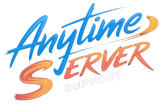Summary:
The SaaS industry continues to thrive in 2025, but competition is fiercer than ever. Scaling a SaaS business is not just about acquiring new customers—it’s about improving retention, optimizing operations, and driving sustainable growth. This post explores proven and emerging strategies that SaaS founders and marketers can use to scale smarter in today’s fast-evolving landscape.
1. Focus on Customer Retention Over Acquisition
While getting new users is important, retaining your current customers delivers more long-term value. In fact, studies show that increasing customer retention by just 5% can increase profits by 25% or more.
Use tools like intercom, HubSpot, or Customer.io to monitor user behavior, segment your audience, and send personalized communication that keeps users engaged. Offer in-app support, product tours, and a knowledge base to improve onboarding and reduce churn.
2. Adopt Product-Led Growth (PLG)
PLG flips the traditional marketing funnel by letting the product itself drive user acquisition and retention. Freemium models, free trials, and in-app referrals are powerful tools that let your users market the product for you.
Use in-app analytics (e.g., Mixpanel, Pendo) to track usage and identify features that drive value. Make it easy for users to discover those features early through guided experiences and prompts.
3. Optimize Your Pricing Strategy
Pricing isn’t just a number—it’s a growth lever. Tiered pricing, usage-based models, and value-based pricing can all increase revenue if implemented strategically.
In 2025, successful SaaS businesses are experimenting with hybrid pricing strategies that cater to different customer segments. Consider A/B testing your pricing page, bundling features, or offering annual discounts to improve cash flow.
4. Invest in Scalable Infrastructure
A SaaS product must grow with its user base. That means choosing cloud providers and databases that scale efficiently, using containerized deployments (e.g., Docker, Kubernetes), and implementing CI/CD for rapid iteration.
Downtime or lag during scale can kill user trust—build for scalability from day one.
5. Build a Data-Driven Culture
Make data part of your decision-making process. Use metrics like CAC (Customer Acquisition Cost), LTV (Lifetime Value), churn rate, MRR/ARR, and NPS to evaluate and adjust your strategies.
Tools like ChartMogul, Baremetrics, and Google Data Studio help visualize performance and guide business decisions.
6. Double Down on SEO and Content Marketing
In a saturated market, thought leadership and organic visibility are gold. A strong content strategy can attract top-of-funnel traffic, educate prospects, and build trust over time.
Create blog posts, case studies, comparison pages, and video tutorials. Target long-tail keywords relevant to your product, and keep content updated regularly.
7. Leverage Integrations and Ecosystems
Integrating with other platforms can open up powerful marketing and product opportunities. Build API integrations with popular tools your customers already use—like Slack, Zapier, or Stripe.
List your product in marketplaces (e.g., AppSumo, Shopify App Store, Salesforce AppExchange) to increase discoverability.
8. Use Automation to Scale Support and Operations
As your user base grows, so do support requests. Use tools like Zendesk, Freshdesk, or AI chatbots to automate common queries, freeing up your team to handle complex issues.
Automate lead nurturing, onboarding sequences, and feedback collection with marketing automation tools.
9. Foster a Strong Customer Success Team
Customer success isn’t just support—it’s about helping users get the most out of your product. A dedicated team can proactively reach out to at-risk accounts, run QBRs (Quarterly Business Reviews), and improve user outcomes.
Happy customers are your best brand advocates—and the key to reducing churn.
10. Experiment, Learn, Repeat
SaaS is a fast-moving space. What worked last year may not work today. Adopt a culture of experimentation across marketing, product, and support.
Run A/B tests, pilot new features with beta users, and seek regular feedback. Use failure as a feedback loop to refine and evolve.
Final Thoughts:
Scaling a SaaS business in 2025 requires more than clever marketing—it takes a product-driven mindset, operational excellence, and a relentless focus on customer success. By implementing these strategies, SaaS startups can grow more sustainably, adapt more quickly, and build lasting value in a competitive market.
At Anytime Server Support, we assist SaaS companies with secure, scalable infrastructure and backend support so they can focus on what matters most: delivering value to users and growing faster.

